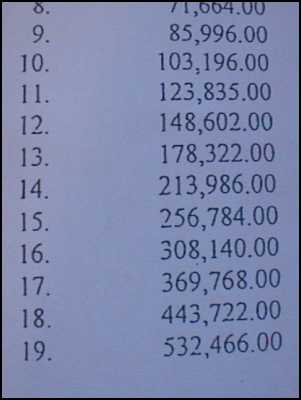SLUDGE ECONOMY SPECIAL: Wassup With Our Vegetable Economy - Why The NZ Economy Has Turned Into A Vegetable
NOTE:
Authors of this report will be anonymous and wide ranging.
Indeed you are invited to contribute: The format is as a
reporters notebook. It will be published as and when
material is available. C.D. Sludge can be contacted at sludge@scoop.co.nz. The
Sludge Report is available as a free email service..Click HERE
http://www.scoop.co.nz/cgi-bin/newsagent/new_user.cgi?form=home
to subscribe.

Another Sludge Funny Money Story
Sludge Report #20
Wassup With Our Vegetable Economy
NZers aren’t buying their vegies Sludge is hearing on the Radio. Why?
Business Confidence is down again – to – according to the National Bank – “diabolical levels”. Meanwhile the National Bank’s “Leading Index” which forecasts growth is picking a 1% contraction for the June Quarter. This afternoon WestpacTrust lowered its fixed term interest rates.
Last week the Reserve Bank was planning to put on the brakes further on the economy come next MPS day. Today ACT seems to think it is time to push the panic button.
Hyperbole says Cullen, this is a case of panic and talking the economy down.
Commerce of Chamber cheerleaders meanwhile prefer to believe this than acknowledge what is really going on. Afterall it may save them from the ‘orrible ERB. More importantly if it is due to the ‘orrible ERB then all you need do is get rid of the ERB.
Sludge’s advice is to listen to the bankers. And they are now singing a different tune.
After all the bankers are the ones counting how many pennies there are out there and the picture on the inside of New Zealand’s monetary system is not pretty.
Bankers are now acknowledging that the domestic economy is in slow motion. The signs are all around, 0 movement in food prices, slack consumption, a falling property market, and low confidence both in the business and the consumer spheres, and a flat vege market.
Why?
The answer is simple. NZers who have spent the last decade spending more than they earn and paying ever greater prices to each other for their homes have finally hit the wall.
Figures out next week from the Reserve Bank will confirm what is already well known, that the debt to disposable income ration of the Kiwi household has increased from 50% to 100%.
Now they are being frugal. They are saving their pennies. Eating pasta and spam, save the vegetables. Credit cards are being paid down rather than run up.
And the consequence of all this is a contraction.
The only questions to really to ask now is how bad is it? Will it get worse? And what started it?
The following is Sludge’s investigation into these questions so far.
Why The NZ Economy Has Turned Into A Vegetable
Sludge has been seeking the opinion of the wise and informed over the past few days while seeking an explanation for the extreme economic contradictions facing the NZ Economy – most significantly the fact that we have an export surge going on but have ‘87 vintage business confidence.
Money Supply statistics are not followed closely by economic modelers because they are – among orthodox economists - considered only a “loose” approximation of what is happening in the economy.
That said, there is a clear relationship between growing money supply and economic growth.
The prevailing wisdom is that when an economy grows, money supply growth is the consequence. As increased prosperity leads people to borrow more money.
Money Supply is, in economic jargon, demand driven.
According to this theory the level of the interest rate drives demand and that is why the Reserve Bank is said to “tighten money supply” when it raises interest rates. It does this by making you less likely to want to borrow.
According to this theory therefore it is confidence that is the trigger and money supply change is the result.
However as the following observations show this is not altogether clear.
The following observations are the ones that have been puzzling Sludge. They are accompanied by various explanations and Sludge’s initial views on what they mean. Reader response to the following is invited.
Firstly, to paraphrase a banker spoken to by Sludge this week on the theory behind the relevance of Money Supply statistics. For the uninitiated PSC and M3 are money aggregates - tables of which appear on the Reserve Bank website.
- if only the M3 is weak and PSC growth is still strong it would be an indication that foreign depositor inflows were continuing to fund credit expansion – however – if the M3 and PSC are both weak then it would indicate the economy is slowing – all other things being equal -
OBSERVATION 1: In the last six months of 1999 M3 (the broadest aggregate of Money Supply) grew by $4 billion. In the first five months of 2000 it has grown by just $1 billion. Most of the growth in M3 in 1999 took place between July and September.
(RESPONSE OF SKEPTIC: M3 is only one measure of Money Supply, it is volatile, subject to noise and in any event the broader measure - Private Sector Credit (PSC) is still showing growth.)
SLUDGE’S VIEW: M3 Has been in effect pretty static since September 1999, before the election. It’s slowing in growth can therefore not be attributed to the ‘orrible ERB. It has over the last 8 months grown more slowly than at any previous period in the decade. It is more than reasonable to say that its growth has slowed.
OBSERVATION 2: In the last six months of 1999 PSC(R) (the broadest aggregate of resident (R) Private Sector Credit) grew by $6 billion. In the first five months of 2000 it has grown by $3.2 billion.
SLUDGE’S VIEW: Again growth has slowed though the impact is far less pronounced than in the M3. Notably the burst in growth in PSC was accompanied by a burst in housing starts (particularly Auckland Apartments) and in credit card spending towards the end of 1999. Notably also the period of more rapid growth in PSC closely maps the rises in GDP.
OBSERVATION 3: In the last six months of 1999 M3 Institutions balance sheets (their total assets) grew by $11 billion to $157 billion. In the first five months of 2000 the balance sheets grew by a further $10 billion.
SLUDGE’S VIEW: While Money Supply growth has been slowing – (remember constant money supply growth is normal) – there has been no fall off in bank assets. In fact quite the reverse has been happening – they have been increasing. A lot of this can be explained by the Current Account deficit of around $8 billion but not most of it. Significantly also of the $20 billion in growth $14 billion was funded in the “Foreign Currency Funding – Non Resident” account – meaning that it came into NZ’s banks in the form of loans from parent banks essentially. Conclusion:
The above shows – to reflect back to the banker’s theoretical comments – that both M3 and PSC are both slowing. This would be expected to be accompanied by a slowing economy as it would indicate that foreign credit expansion was no longer financing the great New Zealand pastime of property value accretion.
And the results of the impact of this are increasingly obvious all around us – most spectacularly in the Business Confidence surveys.
More puzzling however in these statistics is the coincident $21 billion rise in the balance sheets of NZ’s foreign owned banks.
If their assets are growing so fast, how come we don’t have more money to spend here in NZ?
The $8 billion Current Account Deficit reflects the dominant part of this and the $5 billion growth in M3 is the domestic economy – NZ Inc’s - contribution.
However a further $6 billion in growth in these balance sheets over the last 12 months is difficult to find an explanation for.
One explanation offered to Sludge for this phenomena is that the Belgian Dentist and Japanese Drycleaner is being paid out. As this happens their NZ investments are being replaced by the NZ branch banks with “Non-Resident Foreign Currency Funding” – effectively loans from the parent banks to their NZ branches.
But is this all of it? The short answer is that as no-one takes a great deal of notice of these statistics noone seems to know.
As for ways of reversing the effect of the shrinking money supply there is only one generally accepted way to reverse such a trend - and that is lowering interest rates.
In the meantime some closer analysis of money supply and capital flow statistics, which orthodox economists have decided are no longer relevant, might be in order. Sludge notes that if watching the M3 was anywhere near as popular as watching Business Confidence then we might have known there was a credit crunch underway when it started - rather than 9 months later.
© Sludge 2000



 Eugene Doyle: Quiet Mutiny - The U.S. Army Falls Apart
Eugene Doyle: Quiet Mutiny - The U.S. Army Falls Apart Gordon Campbell: Papal Picks, And India As A Defence Ally
Gordon Campbell: Papal Picks, And India As A Defence Ally Binoy Kampmark: The Selling Of America - Ending The US Dollar’s Exorbitant Privilege
Binoy Kampmark: The Selling Of America - Ending The US Dollar’s Exorbitant Privilege Frances Palmer: Remembering Vietnam And Cambodia 50 Years On During ANZAC Week
Frances Palmer: Remembering Vietnam And Cambodia 50 Years On During ANZAC Week Binoy Kampmark: Euphemistic Practices - The IDF, Killing Aid Workers And Self-Investigation
Binoy Kampmark: Euphemistic Practices - The IDF, Killing Aid Workers And Self-Investigation Gordon Campbell: On The Left’s Electability Crisis, And The Abundance Ecotopia
Gordon Campbell: On The Left’s Electability Crisis, And The Abundance Ecotopia